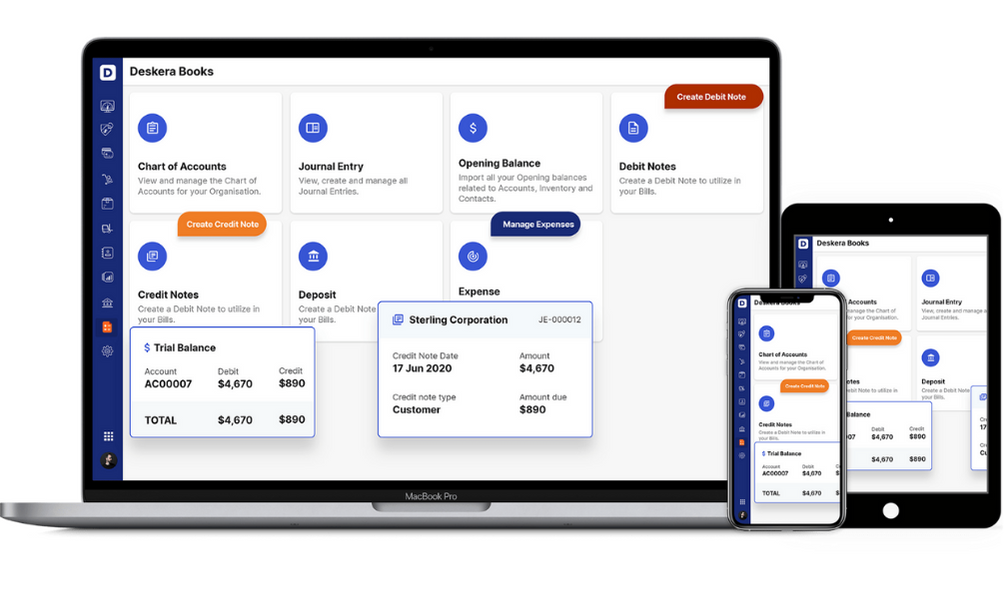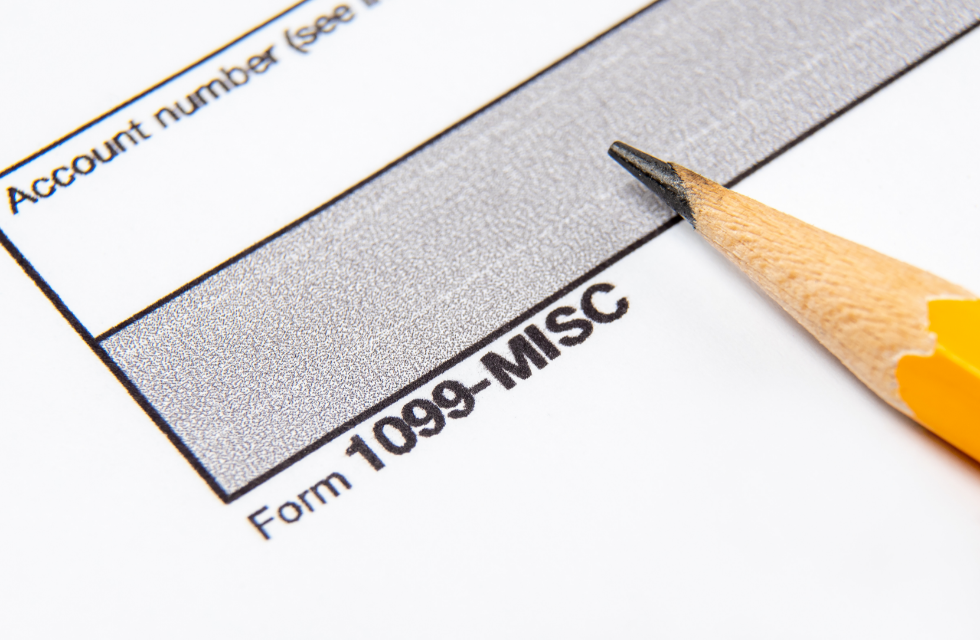Each employer, regardless of the field, is always looking for ways to get tax credit benefits. One way to earn significant tax credit benefits is to hire employees from qualified target groups.
Although it may sound simple enough, employers need to make sure that they take specific actions right before and after they offer the job and when the employee comes in on their first day of employment. Form 8850 is the one that needs to be submitted to the State Workforce Agency (SWA) by the employers.
Table Of Contents
- Purpose of Form 8850
- Who Needs This Form?
- When And Where to File Form 8850?
- How to fill out form 8850?
- Form 8850 Recordkeeping
- What is the Criteria to be Certified as a Member of Targeted Groups?
- Who Can Be Certified as A Welfare-to-Work Job Applicant?
- Conclusion
- How can Deskera Help You?
- Key Takeaways
Purpose of Form 8850
The main purpose of Form 8850 is to allow employers to pre-screen potential new employees and also to make a written request to a SESA, in order to certify that the employee they are looking to hire is a member of a targeted group. Once certified, the employer can then qualify to get work opportunity credit. The work opportunity credit is only available for the employees who started working for the employer after September 30, 1997, and before July 1, 1998.
Following January 1, 1998, Form 8850 has also been used as a way to pre-screen employees and to make a writer request to a SESA in order to certify that the employee is a long-term family assistance recipient. This will allow the employer to qualify for the welfare-to-work credit. To qualify for the work opportunity credit or the welfare-to-work-credit, the first step taken by the employer is to submit Form 8850 to the SESA.
Following the submission of Form 8850, the SESA needs to certify that the employee is a member of a targeted group or a long-term family assistance recipient. Once the employee starts working, he needs to meet the requirement of a minimum number of hours worked to qualify for the work opportunity credit. As for the welfare-to-work credit, employees need to meet the minimum number of hours worked and minimum number of days worked requirement. Whichever credit the employer then qualifies for, they can then fill out the applicable credit form to obtain it.
Who Needs This Form?
Both the employer and the employee need Form 8850. The employee first needs to provide the employer with all the required information, on or before the day he is offered the job. The information provided by the employee is then entered in Form 8850. The employer then needs to determine if the employee is a member of a targeted group or a long-term recipient of family assistance, based on the information provided by the employee.
Once the employer has decided that the employee is a member of a targeted group or a long-term recipient of family assistance, he needs to fill out the rest of the form on or before the day the job is offered. The form is then signed by both the employee and the employer and submitted to SESA for certification.
When And Where to File Form 8850?
Form 8850- needs to be submitted to your SESA. The form needs to be submitted no later than the 21st day that the employee starts working for the employers. It must be noted that Form 8850 should not be filed with the Internal Revenue Service. Employers can also get a directory of state work opportunity credit and welfare to work credit coordinators on the Department of Labor’s website. These coordinators can better guide you by telling you where Form 8850 needs to be sent.
How to fill out form 8850?
If you want to complete the paperwork, then you need to fill out your name, address (no PO Box), date of birth, and social security number. Then you will have to answer a series of questions that will determine eligibility. Tick the appropriate checkbox in case any questions apply to you.
Form 8850 Recordkeeping
It is important that you keep copies of Form 8850 that you submit to your SESA. Along with the copies of Form 8850, it is imperative to also keep the copies of transmittal letters that you submitted along with Form 8850. Keeping these copies will ensure that you have a record in case required for the administration of the Internal Revenue Code provisions that relate to the work opportunity credit or the welfare-to-work credit. Records supporting these credits must be kept usually for at least 3 years from the specified date from which any tax returns claiming these credits are due or filed.
What is the Criteria to be Certified as a Member of Targeted Groups?
The SESA is responsible for certifying if a potential employee is a part of a targeted group or not. To certify that they belong to a targeted group, they must fulfill the following criteria.
1. The employee must be a member of a family that receives assistance under a state plan. The state plan must be approved under Part A of title IV of the Social Security Act, which relates to the Aid to Families with Dependent Children (AFDC) or any other such program. The duration of relieving assistance must be 9 months during the 18 months period that ends on the date the employee is hired.
2. The employee must be a veteran who is a part of a family that receives assistance under the Food Stamp program. He should receive this assistance for a period of 3 months during a 15-month period that ends on the date the employee is hired. Also, to be considered a veteran, in this case, the employee must: (a) Have served in the Armed Forces of the United States on active duty, which does not include training, for a period that exceeds 180 days. Alternatively, he should have been discharged for a service-related disability. (b) Not have a period of active duty, which does not include training, for a period that exceeds 90 days. The active-duty period should also have ended during a period of 60 days, which ends on the date of hire.
3. The employee must be an ex-felon who: (a) was convicted of committing a felony under any Federal or State law. (b) was hired after a period of no more than 1 year, from the date of conviction or release for the specified felony. (c) is a member of a family that has an annual income that is 70% less than the lower living standard specified by the Bureau of Labor Statistics. The employee should be a member for a period of 6 months, one month before the date of hire.
4. The employee must be at least 18 years old, but not older than 25 on the date of hire. He should also live in a zone of empowerment or enterprise community.
5. An employee who is suffering from a mental or physical disability that results in a substantial handicap, affecting their employment. The employee should also have been referred to the employer once he has completed his rehabilitation or while receiving rehabilitation under a state rehabilitation program that is approved by the Department of Veteran Affairs.
6. The employee must be someone who: (a) works for the employer between May 1 and September 15. (b) Is 16 years old, but not 18 on the date of hire. (c)was never employed by the specified employer before. (d) resides in an empowerment zone or enterprise community.
7. The employee must be someone who: (a) is at least 18 years old, but not older than 25. (b) Comes from a family that has received food stamps for a period of 6 months by the date of hire, or is not eligible to receive this assistance under section 6(o) of the Food Stamp Act of 1977, and his family should also have received this assistance for a period of 3 months out of 5 months by the date of hire.
8. The employee must be an individual who receives supplemental security income benefits under title XVI of the Social Security Act. The benefits should include all the types described under section 1616 of the Social Security Act or section 212 of Public Law 93-66. He should be receiving these benefits for a month within a 60-day period that ends on the date they are hired.
Who Can Be Certified as A Welfare-to-Work Job Applicant?
The employees who start work for their employer after December 31, 1997, can be certified as recipients of long-term family assistance if they fulfill the following criteria:
- If the employee has received assistance payments from AFDC or any other successor program. The assistance should have been received for a duration of 18 consecutive months that ends when the employee is hired.
- If the employee has received assistance payment from AFDC or any other successor program. This assistance may or may not be consecutive if it begins after August 5, 1997.
- If the employee is no longer eligible for assistance payments after August 5, 1997. This may be because Federal or State law limits the maximum period for which such assistance is payable. The employee should not be hired any later than 2 years after they stop being eligible for this assistance.
Conclusion
Form 8850 is an important pre-screening step that employers need to fill out and submit to their SESA if they want to ensure that the employee they are looking to hire, is a certified member of a targeted group or a long-term recipient of family assistance.
How can Deskera Help You?
Deskera Books is an online accounting, invoicing, and inventory management software that is designed to make your life easy. A one-stop solution, it caters to all your business needs, from creating invoices and tracking expenses to viewing all your financial documents whenever you need them.

Key Takeaways
- Employers are able to get tax credit benefits by employing individuals who are members of qualified target groups.
- Employers need to fill out Form 8850 and submit a request to a SESA that will certify that the employee they are looking to hire is a member of a qualified target group.
- SESA needs to review the submitted form and the information provided to certify that the individual is, in fact, a member of a target group or a long-term recipient of assistance.
- Employers can also benefit from the welfare-to-work credit, for which they need to meet the minimum number of hours worked and minimum number of days worked requirement.
- The employer needs to fill out Form 8850 and the employee needs to provide the required submission. The form is then signed by both the employer and employee and the completed form is submitted to SESA for certification.
- Form 8850 needs to be submitted to a SESA no later than the 21st day that the employee starts working for the employers.
- Copies of Form 8850 and transmittal letters submitted along with it should be kept for a duration of 3 years from the specified date from which any tax returns claiming these credits are due or filed.
- An employee who is a member of a family receives assistance under a state plan. To be certified as a member of a target group, they must be at least 18 years old, but not older than 25 on the date of hire, and they should also live in a zone of empowerment or enterprise community.
- Employees who have received assistance payments from AFDC or any other successor program can be certified as long-term recipients of assistance.
Related Articles












